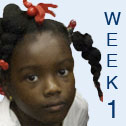A Brief History of the English Language
Today, English is spoken in hundreds of countries and is considered to be the primary language of international relations. How did this come to be? How did the scope of the English language spread so far and wide from its concentrated beginnings? This article, A Brief History of English with Chronology, addresses these questions. At this time, read the article and respond to the following assignment. Add your response to the word-processed document you saved from the Week 1 Assignment Part A.
Week 1 Assignment Part B: Briefly summarize the history of the English language.
![]() Now that we have read about the history of the English language, let’s do a quick activity that demonstrates the impact that German and Latin influences have had on everyday modern English. Click on the icon to the left to begin the activity.
Now that we have read about the history of the English language, let’s do a quick activity that demonstrates the impact that German and Latin influences have had on everyday modern English. Click on the icon to the left to begin the activity.
 Now, click on the projector to watch a short video of an educator of Linguistics, Mr. Sam Landrian, discuss the impact of the Germanic and Latin roots and how it applies to teaching English. This video also includes six volunteers orally completing the activity you were just asked to complete.
Now, click on the projector to watch a short video of an educator of Linguistics, Mr. Sam Landrian, discuss the impact of the Germanic and Latin roots and how it applies to teaching English. This video also includes six volunteers orally completing the activity you were just asked to complete.
Were your words similar to those of the volunteers? Notice that it is less common for someone to come up with verbs such as: educate, evaluate, or interrogate. As we learned from Mr. Landrian, the general tendency is to think first of monosyllabic irregular verbs rather than polysyllabic ones. The reason for this is very simple: The short irregular verbs are all of a Germanic origin and have existed in the English language for nearly five centuries longer than the polysyllabic verbs that were integrated into English through French just under five centuries ago.
How does knowing this apply to teaching English and helping students learn another language?
By understanding the impact that Germanic (Anglo Saxon) and Romance (from Latin first and Normand French later) languages have had on modern English, we are better equipped as instructors to meet our ELLs’ language development needs. In other words, identifying words and patterns that we know our ELLs will recognize (based on their first languages) is powerful information. ELLs that come from Romance language backgrounds (e.g. Spanish, Portuguese, French, Creole, Rumanian, and Italian) are likely to recognize many of English’s polysyllabic verbs due to the cognate words resulting from sharing a common stratus in their L1.
These verbs, however, tend to be used with less frequency by native English speakers who more typically use monosyllabic and irregular verbs of Germanic origin. These monosyllabic irregular verbs like: eat, have, take, go, think, tell etc., are common in English, yet can be a source of confusion for ELLs and must be learned through meaningful practice.
Here are a few examples of Latin-based English verbs that are usually more familiar to ELLs from a Latin language background:
| English | French | Italian | Portuguese | Spanish | Romanian |
|---|---|---|---|---|---|
| Complicate | Compliquez | Complicare | Complicar | Complicar | Complicat |
| Educate | Eduquer | Istruire | Educar | Educar | Educat |
| Communicate | Communiquer | Comuniqure | Comunicar | Comunicar | Comunicare |
| Participate | Participer | Partecipare | Participar | Participar | Participa |
We can support the academic language development of ELLs from different linguistic backgrounds by pointing out the similarities between the words in English and their L1. By identifying these similarities, students from a Romance language background will have access to a significant portion, over 50%, of English vocabulary. This is one way that ELLs transfer first language skills to learning English.
VIDEO SESSION # 2
Watch this Video “How did English Evolve?” BY - Kate Gardoqui https://youtu.be/kIzFz9T5rhI
![]() Cognates are words in two languages that have similar meaning, spelling, and pronunciation. 30%-40% of all words in English have a related word in Spanish. Have students and parents to try to generate a list of words that are similar in English and in their heritage language. For example: abomination, star, night, animal, family. RESOURCE & INFORMATION FOR PARENTS
Cognates are words in two languages that have similar meaning, spelling, and pronunciation. 30%-40% of all words in English have a related word in Spanish. Have students and parents to try to generate a list of words that are similar in English and in their heritage language. For example: abomination, star, night, animal, family. RESOURCE & INFORMATION FOR PARENTS








